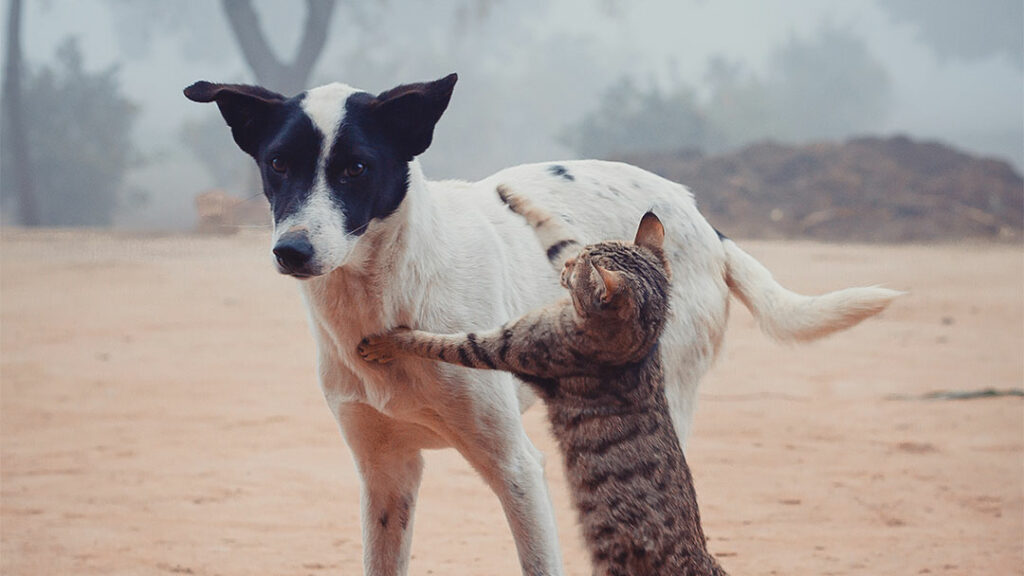During cold weather and generally in the winter months, outdoor cats endure some tough and, at times, life-threatening conditions. Even if you manage a feral cat colony or only have a cherished pet who likes the outdoors, it’s crucial to offer shelter that’s secure and insulated. A cat house for winters outdoors is more than just a luxury — it’s an essential element of helping keep your feline friends warm, dry and safe from the elements.
Importance of an Outdoor Cat House for Winter
There are many perils of cold for outdoor cats. Frostbite, hypothermia and dehydration are just some of the dangers they encounter in winter. Sure, some cats might find their way to a place like a shed or under the porch, but these are hardly optimal shelters, and certainly won’t keep them warm and safe. A well-done outside cat house for winter can be a life-saving solution.
A solidly constructed outdoor cat shelter helps keep body heat in, snow and rain out and offers a sense of security away from predators. It forms a stable microenvironment that’s windproof for cats, that is warmer and can always let them sleep in winter without feeling cold, and it doesn’t need to worry about cats searching for warmth all the time. In lots of places, whether a cat has access to a safe, insulated space can mean the difference between life and death in the winter.
What to Look for in a Winter Cat House?
Selecting the best outdoor house for cats in the winter is about more than simply finding a small shelter. It’s a matter of choosing a structure that is up to the challenges of winter weather. The key is insulation. Opt for materials like foam, thermal-reflective linings or even self-warming pads that help trap body heat. It should also have a raised base, which keeps the floor off the icy ground and cuts down on cold seepage, as it does on snow that might ice over the entrance by filling it with snow.
The entrance itself should be wide enough for a cat to go through and narrow enough to exclude larger animals or gusts of wind. Some cat houses for winter feature 2 exits to provide an escape route if danger should happen to lurk outside. Waterproof construction and sealed seams keep leaks and drafts at bay, on which we rely when snow turns to slush and heavy rain falls out of the blue.
Although many cat owners decide to try and make their own, pre-constructed cat houses often feature tried and tested weather-resistant designs and can be assembled in no time. Many even come with heated pads or electric heating elements that are safe to use outdoors. For those who do not have power, insulated materials combined with straw bedding are a good way to have no-electric heat.
Best Places to Position
But the best insulated cat house for winter also won’t do its job well if it is set up in an exposed or inappropriate place. Just where you nestle the house can make a big difference. Under decks, next to garage walls or near thick vegetation can provide additional protection from wind and moisture.
Place it upon a brick or pallet or a small platform, the shelter will stay dry and keep out the cold off the frozen ground. Entry should not directly face common wind (usually south or east) to prevent wind chill from entering the protected area. Simply by adding a flap or partial covering over the entrance can provide extra insulation and help keep the blowing snow out.
In heavy snowfall areas, just check the cat house regularly and make sure it isn’t blocked or buried. Convenient access is important if food and water are placed close to them. Offering water that is unfrozen could also be a matter of life or death since dehydration is still a concern even when water turns to ice.
Helping Feral and Stray Cats Survive Winter
For people who maintain feral cat colonies, installing more than one outdoor cat house for winter can cut down on those losses. Cats are territorial and this prevents crowding – letting even the cat in the ‘hood shares. Slathering shelters together but having a bit of room between the entrances can help cats, save on heat and stay relaxed.
It is just as crucial to keep shelters clean and dry. Wet sleeping or bedding gear, or piles of snow in the shelter will also diminish insulation and may result in the shelter being non-habitable. Change straw or bedding as necessary and inspect the structure for damage after wind or storms.
DIY vs. Pre-Made Winter Cat Houses
Some cat lovers choose to fabricate their own outdoor cat house for the winter, with materials like storage bins, foam insulation and waterproof adhesives. DIY homes can work if done correctly, but it’s important to make sure they are weatherproof, insulated and built to last. A tiny design flaw can cause the shelter to let in cold air or water, undermining the purpose of the shelter.
On the flip side, pre-manufactured models are convenient and usually come with professional-grade insulation and safety-tested heaters. Many commercial shelters are pre-fabricated with simple instructions and materials that will withstand long-term outdoor use. Regardless of building or buying, the most important aspect is for the cat house to shed water and operate dependably under tough weather conditions.
Making Winter Safer for All Outdoor Cats
Building a warm outdoor cat house for the winter is a humane way to safeguard homeless animals during the coldest months of the year. For those domestic cats with access to the outside, it is a backup shelter when things go wrong and they find themselves locked out or hung up on the wrong side of the block. It means for strays and ferals the difference between suffering and safety.
Quality materials, a good location and regular maintenance will keep these shelters usable all season long. Cats will gradually learn where to find a warm, dry spot where they feel safe — and the little effort you put is can make a huge difference in their health and survival.
Giving cats a warm place to stay may also prevent the animals from finding unsafe spots, like car engines or crawlspaces, where they can get stuck or hurt, especially during the winter. With increasing adoption of trap-neuter-return (TNR) programs in more communities, winter shelters are a vital component of a safety net designed to manage and maintain outdoor cat populations.
Conclusion
A cat house for winter outside is the kindest, most loving thing you can do for your outdoor cat in the winter. Whether you’re caring for a colony of feral cats or simply looking for a place for your adventurous pet, a good shelter is indispensable.
By focusing on insulation, weather resistance and placement, you can design a warm, dry and secure environment for cats to take refuge. These seemingly small gestures of kindness not only preserve animal life but also hint to a profound respect for the lives and well-being of creatures that rely on humans for the help they need to move through the winter.



